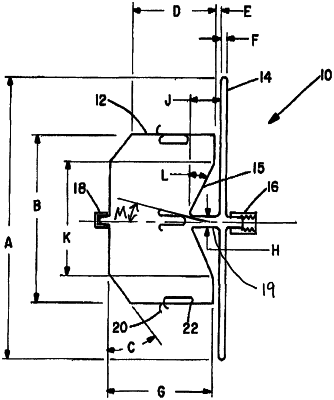| CPC A61B 17/12109 (2013.01) [A61B 17/0057 (2013.01); A61B 17/12031 (2013.01); A61B 17/12122 (2013.01); A61B 17/12168 (2013.01); A61B 17/12172 (2013.01); A61B 17/12177 (2013.01); A61B 2017/00575 (2013.01); A61B 2017/00867 (2013.01); A61B 2017/12095 (2013.01)] | 20 Claims |

|
1. A method of occluding a left atrial appendage (“LAA”) of a patient with a medical device, the method comprising:
accessing the patient's right atrium via a femoral vein;
advancing a delivery catheter distally through an opening in a septum of a heart of the patient until a distal end of the delivery catheter is positioned proximate to the LAA or within the LAA;
positioning the medical device within the delivery catheter in a collapsed condition, the medical device comprising:
a self-expandable occluder body having a scaffolding structure formed of nitinol, the occluder body including an outer surface that tapers distally, the medical device having a proximal end portion and a substantially planar distal end portion, the distally tapering surface transitioning directly into the substantially planar distal end portion;
a proximal end fastener coupled to the proximal end portion of the medical device, the proximal end fastener being threadedly coupled to a threaded member within the delivery catheter when the medical device is positioned within the delivery catheter in the collapsed condition;
a distal end fastener coupled to the distal end portion of the medical device, the distal end fastener being radiopaque; and
an occlusion material coupled to the scaffolding structure while the medical device is positioned within the delivery catheter in the collapsed condition,
while the distal end of the delivery catheter is positioned proximate to the LAA or within the LAA, retracting the delivery catheter proximally relative to the threaded member to urge the occluder body out of the distal end of the delivery catheter;
allowing the occluder body to self-expand within the LAA;
piercing a wall of the LAA with a plurality of retentions hooks on the occluder body, each of the retention hooks having an end oriented toward the proximal end portion of the medical device;
after piercing the wall of the LAA with the plurality of retention hooks, disconnecting the medical device from the threaded member by rotating the threaded member relative to the proximal end fastener to release the threaded connection between the medical device and the threaded member; and
substantially fully occluding the LAA in less than about 10 minutes after allowing the occluder body to self-expand within the LAA,
wherein the occluder body defines a recessed surface at a proximal wall of the occluder body such that, after the occluder body self-expands within the LAA, the recessed surface faces away from a cavity defined by the LAA and the proximal end fastener is positioned proximal to the recessed surface.
|